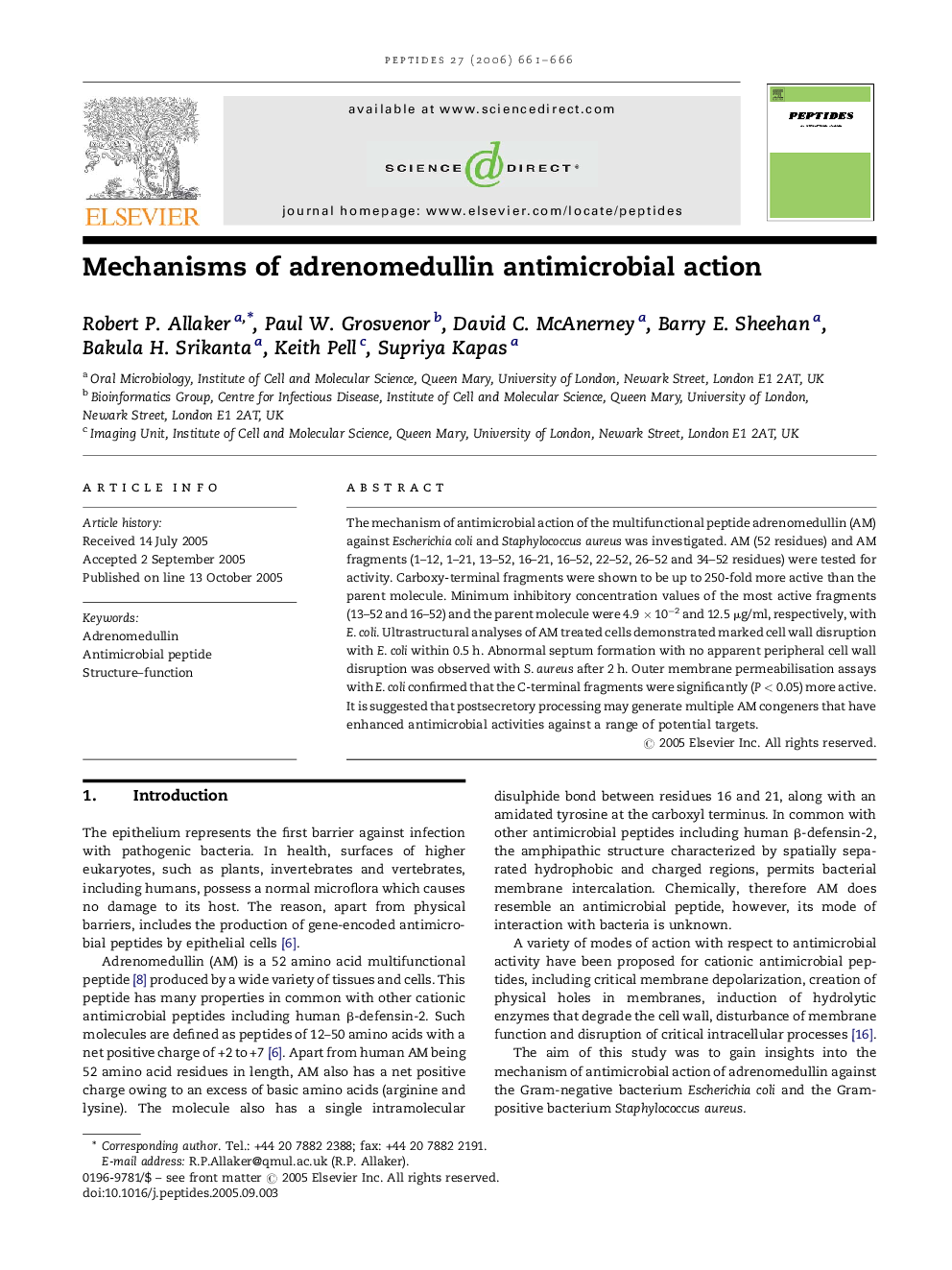| Article ID | Journal | Published Year | Pages | File Type |
|---|---|---|---|---|
| 2008322 | Peptides | 2006 | 6 Pages |
Abstract
The mechanism of antimicrobial action of the multifunctional peptide adrenomedullin (AM) against Escherichia coli and Staphylococcus aureus was investigated. AM (52 residues) and AM fragments (1-12, 1-21, 13-52, 16-21, 16-52, 22-52, 26-52 and 34-52 residues) were tested for activity. Carboxy-terminal fragments were shown to be up to 250-fold more active than the parent molecule. Minimum inhibitory concentration values of the most active fragments (13-52 and 16-52) and the parent molecule were 4.9 Ã 10â2 and 12.5 μg/ml, respectively, with E. coli. Ultrastructural analyses of AM treated cells demonstrated marked cell wall disruption with E. coli within 0.5 h. Abnormal septum formation with no apparent peripheral cell wall disruption was observed with S. aureus after 2 h. Outer membrane permeabilisation assays with E. coli confirmed that the C-terminal fragments were significantly (P < 0.05) more active. It is suggested that postsecretory processing may generate multiple AM congeners that have enhanced antimicrobial activities against a range of potential targets.
Related Topics
Life Sciences
Biochemistry, Genetics and Molecular Biology
Biochemistry
Authors
Robert P. Allaker, Paul W. Grosvenor, David C. McAnerney, Barry E. Sheehan, Bakula H. Srikanta, Keith Pell, Supriya Kapas,
